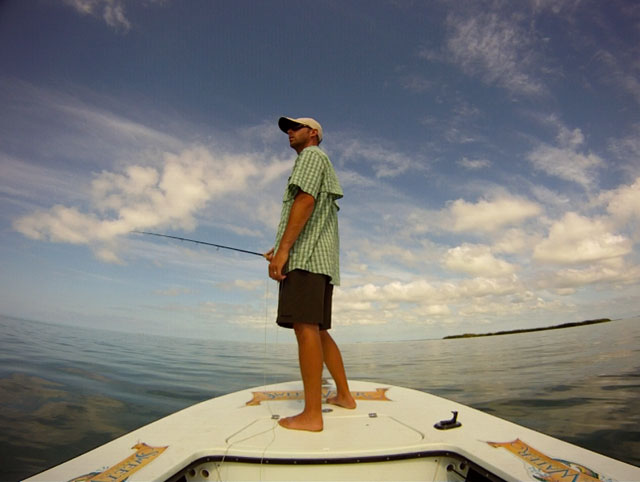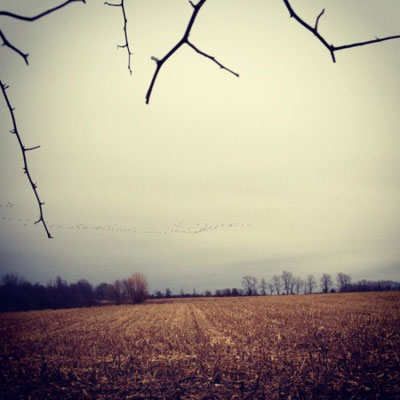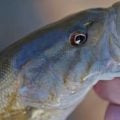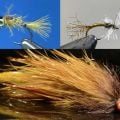On Geese and Tarpon
 Spring is here. It’s finally warm and I’ve already incurred the first sunburn of the season. Of course, this is Upstate NY. I’ve steeled myself for one last cold kick in the teeth—whether it actually materializes or not. Regardless, I’m beyond ready for an upcoming trip to Islamorada to fish for tarpon the end of the month.
Spring is here. It’s finally warm and I’ve already incurred the first sunburn of the season. Of course, this is Upstate NY. I’ve steeled myself for one last cold kick in the teeth—whether it actually materializes or not. Regardless, I’m beyond ready for an upcoming trip to Islamorada to fish for tarpon the end of the month.
This being only my second sortie for tarpon, wrapping my head around the sheer holy-shit-look-at-the-size-of-those-things aspect of the whole deal has my thoughts wandering into some interesting territory. One uncharted stretch is a parallel between fishing for tarpon in the warm tide of the Keys and hunting geese in our upstate NY winter corn stubble.
While there are some well-documented and comprehensive comparisons that have been made between fly fishing and other sports and pastimes—golf, Jazz, the culinary arts, painting, sculpture, even religion—this feels like a different sort of comparison. It’s a comparison of quarry rather than sport. More accurately it’s a comparison of their attitudes. Bear with me while I wander.
Out the back door this morning, a volley of not-so-distant geese greeted me. I walked out to the side yard, clear of the catalpa trees, eyes and head skyward, pretty much as they are anytime I hear geese wail.
I stood listening and watching, my mind immediately in corn stubble mornings, setting dekes by headlamp and intuition with my dad. Reading the 5:30 a.m. wind and organizing an acceptable j-hook or horseshoe for birds to drop into. Ground blinds, flags, shotguns, bags with BB shot-shells, gloves, calls and afterwards, thermos-hot coffee.
 Remembering specific conversations and mornings and fields and flocks as if they were the morning before. Birds rising from the black of pine stands that surround the lakes in the park. From thin air. Their calls and some sort of relief, contrast, movement in the still or blowing backdrop the only things giving them away. Enough time in the field, you get used to the triangulation of sound, sight and expectation. When intuition and second nature become one and the same.
Remembering specific conversations and mornings and fields and flocks as if they were the morning before. Birds rising from the black of pine stands that surround the lakes in the park. From thin air. Their calls and some sort of relief, contrast, movement in the still or blowing backdrop the only things giving them away. Enough time in the field, you get used to the triangulation of sound, sight and expectation. When intuition and second nature become one and the same.
The flock was up. High. Heading for acreage someplace northwest. Pushed off the lake or some other open water by wind and a temperature drop that always accompanies sunrise through late-winter. These birds had no interest in the thousands of acres of corn, soy and greening winter wheat passing below. They had a destination in mind and that’s where they were headed.
This got me to thinking about the word attitude, a term I first heard used with regard to tarpon during my freshman visit to the Keys last summer, and how valuable it is to be able to read it in geese. Understanding by their speed, distance, direction, altitude and plaintive honks or silence—whether they’re worth the breath of a hail call and landing-flap wave of our black flags, or if I should re-fill my thermos lid with coffee and re-light the black Cavendish in my pipe.
I’ll be the first to say that I’m the furthest thing from an expert in tarpon behavior, but last summer, I saw firsthand this exact display of attitude in the way they act. There were times when they were simply moving through—following the ocean-side contour of the coast north or heading from point A to point B in the backcountry. They were low in the water and generally on a mission that did not include showing any fly I presented any interest whatsoever.
Of course, just like I’ve separated singles and doubles from a larger flock of high and silent geese and brought them careening into gun range for a look at our set-up, I’ve heard stories of more than a few instinctively deep-running tarpon that have been enticed to pick up their head and inhale a fly—one or two peeling off from a string in favor of a quick morsel. Never underestimate the beauty of exceptions.
Then there are those stellar moments when their attitude is cavalier. Bad-ass. Even reckless. The half-dozen noisy, careless geese that turn from 100 yards to drop squalling into my set-up, or materializing silently out of nowhere and I hear their pinion feathers before I actually see them make their first pass. Or tarpon when they’re riding high—giant saucer-eyes and buckets working a worm or shrimp hatch, or picking off skittish baitfish. In both cases, the entire ball game changes and it’s all you can do to keep your knees and mind from turning to mush and screwing the shot.
But when the game is on and time and sound stop in their tracks and you manage to knock down your limit or put one of those silver kings in the air—the only attitude that means a damn thing, and the big-ass grin that goes with it, is your own.











